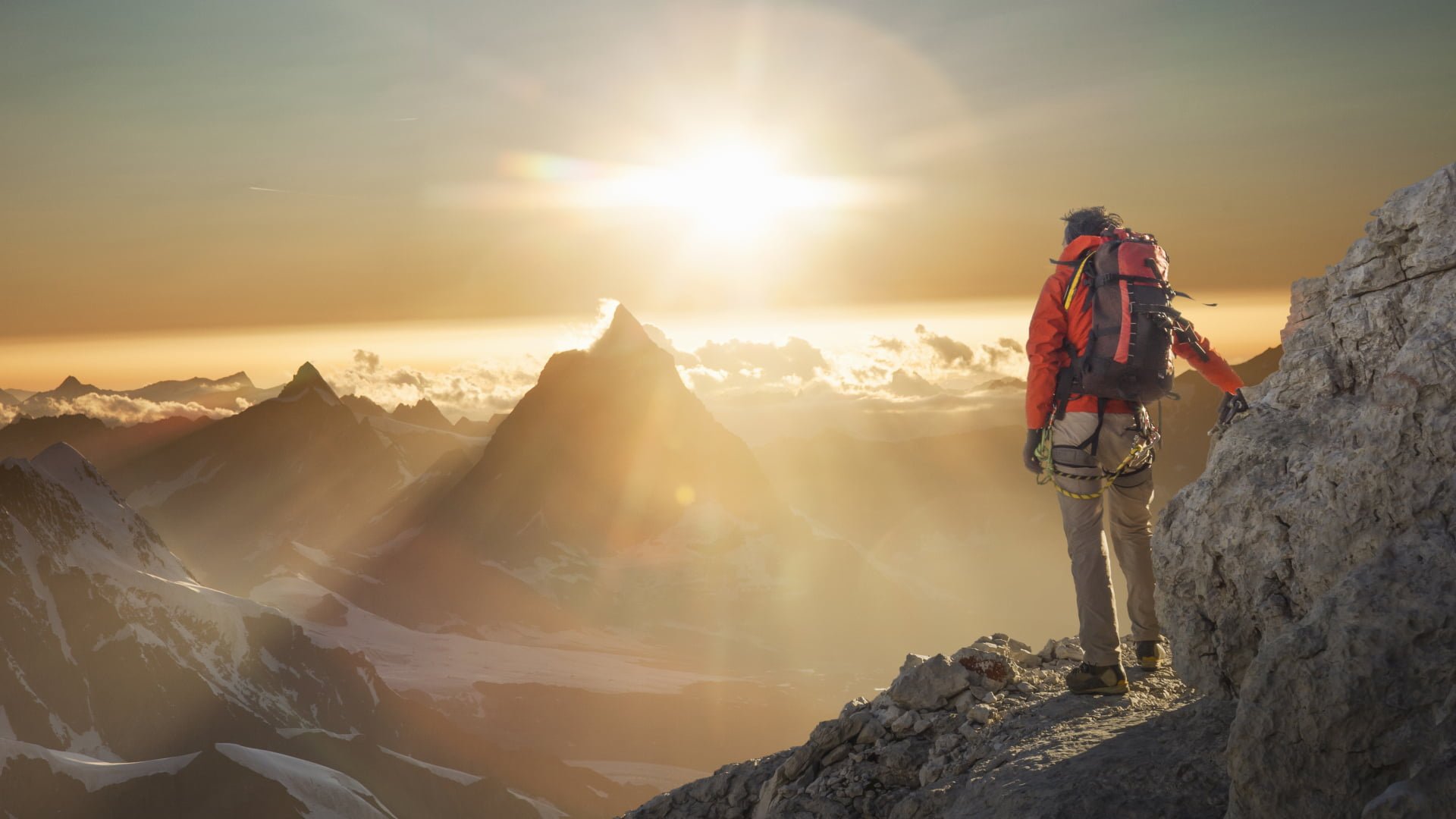Venturing out into nature offers an escape from the routine of daily life. Getting away from urban environments and technology provides an opportunity to reset physically and mentally. Outdoor activities like hiking, backpacking, and trekking allow you to push yourself physically while taking in beautiful natural landscapes.
But while these activities all involve walking outdoors, they have distinct differences when it comes to key elements like gear, fitness level, time commitment, and more. Understanding the difference helps you decide which type of adventure lines up with your mood and preferences.
What is Hiking?
The Oxford Dictionary defines hiking as “the activity of going for long walks, especially across the country”.
Collin’s Dictionary also defines hiking as “A hike is a long walk in the country, especially one that you go on for pleasure.”
According to Wikipedia walking for pleasure developed in Europe during the eighteenth century.
Hiking Vs Trekking
Collin’s Dictionary describes Trekking as “the act of making a long journey across difficult country on foot, usually for pleasure” while,
Oxford Dictionary defines Trek as “go on a long arduous journey, typically on foot.”
While hiking and trekking both involve walking through natural environments, trekking is more challenging and immersive.

A day hike lasts just a few hours round trip with minimal supplies, while trekking requires multi-day wilderness travel on foot with substantial gear. Hiking uses well-marked trails often close to civilization that can be completed by anyone with reasonable fitness. In contrast, trekking ventures deeper into remote areas on less-defined paths, necessitating good physical conditioning and navigation abilities. Hiking allows flexibility in choosing a duration to suit your schedule that same day. Trekking involves carefully planned extended itineraries lasting days or weeks.
While a day hike may cover 5-10 miles round trip, a backcountry trek may cover 5-15 miles daily over many days. The extended duration and distance of trekking require carrying much more gear like clothing, camping equipment, food, and emergency items. The long days under heavy packs demand greater physical endurance and muscle strength too.
Backpacking vs Hiking
What is backpacking? Wikipedia states “Backpacking is the outdoor recreation of carrying gear on one’s back while hiking for more than a day. It is often an extended journey and may involve camping outdoors.”
Oxford Learner’s Dictionary defines backpacking as “to travel on vacation carrying your equipment and clothes in a backpack”
.Backpacking necessitates carefully planned multi-day itineraries for carrying needed gear and provisions. With no permanent camps or overnight stays, day hikes offer simpler adventures compared to immersive overnight backpacking.
Backpacking also comes with more hazards like land navigation errors, wildlife encounters, and gear failures without quick exits. Beginners should build skills through hiking before attempting overnight backpacking trips into remote areas.
Difference between Hiking, Backpacking and Trekking
Physical fitness
Hiking: Requires only moderate fitness levels.
Backpacking: Demands higher fitness and endurance to travel with heavy gear.
Trekking: Necessitates excellent stamina and conditioning to cover long distances with a pack.
Level of Skill Required
Hiking: suitable for beginners and casual hikers. Basic outdoor skills are needed.
Backpacking: Essential to have wilderness camping/navigation abilities.
Trekking: Advanced skills like mountaineering or altitude preparation are often required.
Duration
Hiking: Flexible, choose duration for a few hours up to a full day. No extended time commitment.
Backpacking: Requires carefully planning itinerary for multiple days in the wilderness.
Trekking: Involves extensive time investment in planning, training, and completing multi-week remote journeys.
Gear Essentials
Hiking: Needs only basic gear like shoes, water, and snacks that most people own already.
Backpacking: Requires accumulation of extensive gear like a backpack, tent, stove, etc.
Trekking: Necessitates specialized gear for extreme conditions like climbing equipment, glacier tools, etc.
Accessibility and Location
Hiking: Often uses well-established trails close to inhabited areas.
Backpacking: Ventures onto more primitive, undeveloped trails farther into the wilderness.
Trekking: Focuses on long-distance routes through extremely remote regions.
Weather conditions
Hiking: Choices are available in most weather thanks to a shorter duration.
Backpacking: Requires careful watch of multi-day forecasts and preparation.
Trekking: Demands analysis of seasonal patterns and extremes along the entire extended route.
Day Hike
A day hike is a great exercise for people who would like a walk in nature but do not want to go overboard with it. At the end of the day, you return to your starting point after covering a few miles of distance.
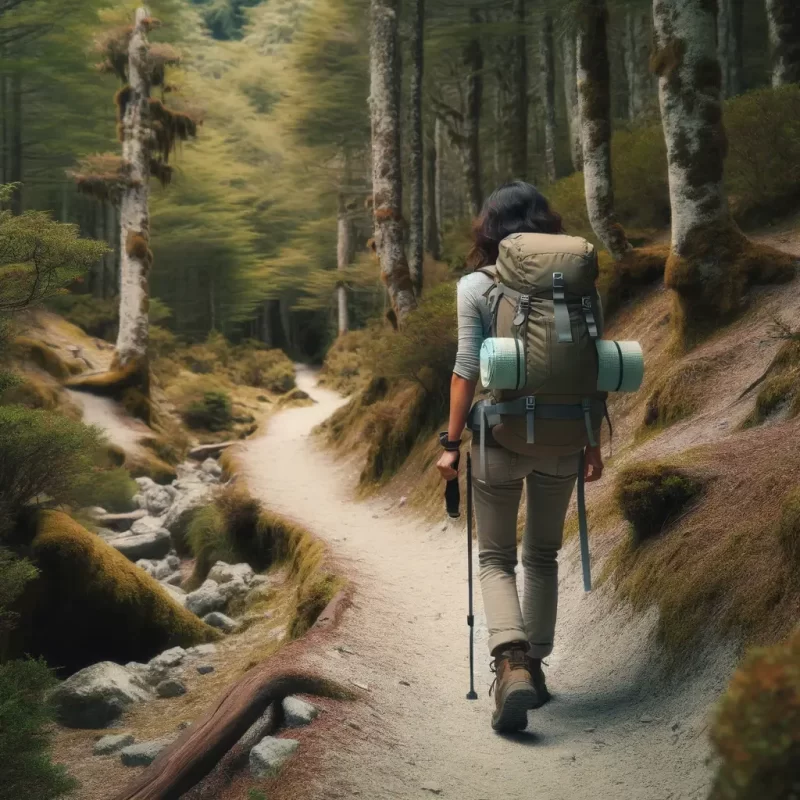
Pros
Day hiking trails are easy to access as they are established near the civilization.
Does not require a lot of effort and planning.
A day hike is best for beginners as it does not require as much physical effort.
Cons
One major drawback of a day hike is that you will have limited time and, therefore little exploration.
Essential Day Hiking Gear Checklist
Sturdy hiking shoes/boots: Provides foot support and traction on uneven terrain. Look for waterproofing and ankle support.
Lightweight backpack (15-30L capacity): Carry an overnight hiking bag for essentials without adding undue weight. 25-30L is a good size for longer hikes.
Water and snacks: it is vital to stay hydrated. Bring 2-3 liters depending on conditions along with some high-energy snacks.
Navigation: A map of the trail can be a helpful tool in navigating multiple paths of a single trail.
First aid kit: Bandages, gauze, tape, medications, gloves, CPR mask. Allow self-treatment of minor injuries.
Layers: Keep lightweight insulation, and windproof/rain jacket depending on the weather conditions.
Flashlight: Light for pre/post dawn hiking or emergencies. Bring spare batteries.
Trekking
Trekking is the ultimate test of outdoor endurance and adventure. It involves undertaking long, arduous journeys through difficult terrains and isolated areas. Trekking trips can vary from several days to weeks or months-long expeditions that truly push your physical and mental boundaries. The long distances covered and challenging routes make trekking the peak of outdoor exploration.
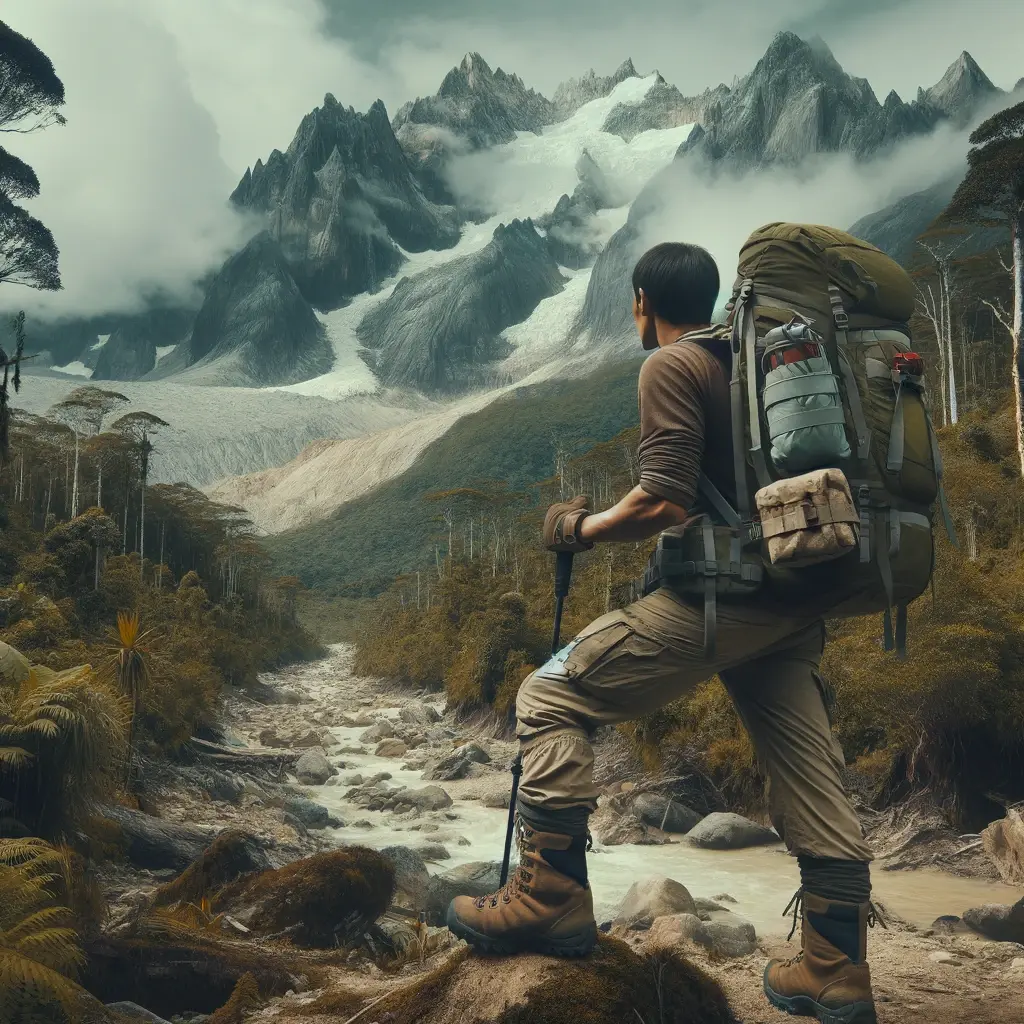
Pros
Trekking allows you to discover new areas and is a more immersive experience.
You get to immerse yourself in the nature.
Cons
Trekking is a multiday journey therefore requires specialized gear and supplies to complete the activity.
Requires safety measures depending on the trek, you may experience wildlife.
Difficult for a beginner.
Trekking Gear Essentials:
Backpack (50-80L): Carry a larger trekking backpack for extensive gear for extended treks.
Shelter: Lightweight tent, tarp, and a ground sheet to protect from elements and a sleep system to keep you warm and cozy.
Trekking poles: Aid stability and reduce strain on knees during long days under heavy packs.
Food & Water: Multiday supply of food and water.
Repair kit: Duct tape, cordage, sewing kit, and gear tools for fixing damaged equipment.
Flashlight & batteries: Sturdy light for pre-dawn starts, night navigation, and camp tasks.
Mountaineering boots: Warm, fully rigid boots for demanding high-elevation trekking terrain.
Satellite communicator: Allows contact for help during emergencies beyond cell phone range in remote areas.
Backpacking
Backpacking involves carrying camping supplies, provisions, and water in a backpack while spending nights camping in remote areas. Backpacking typically involves covering substantial distances and necessitates thoughtful planning and preparation.
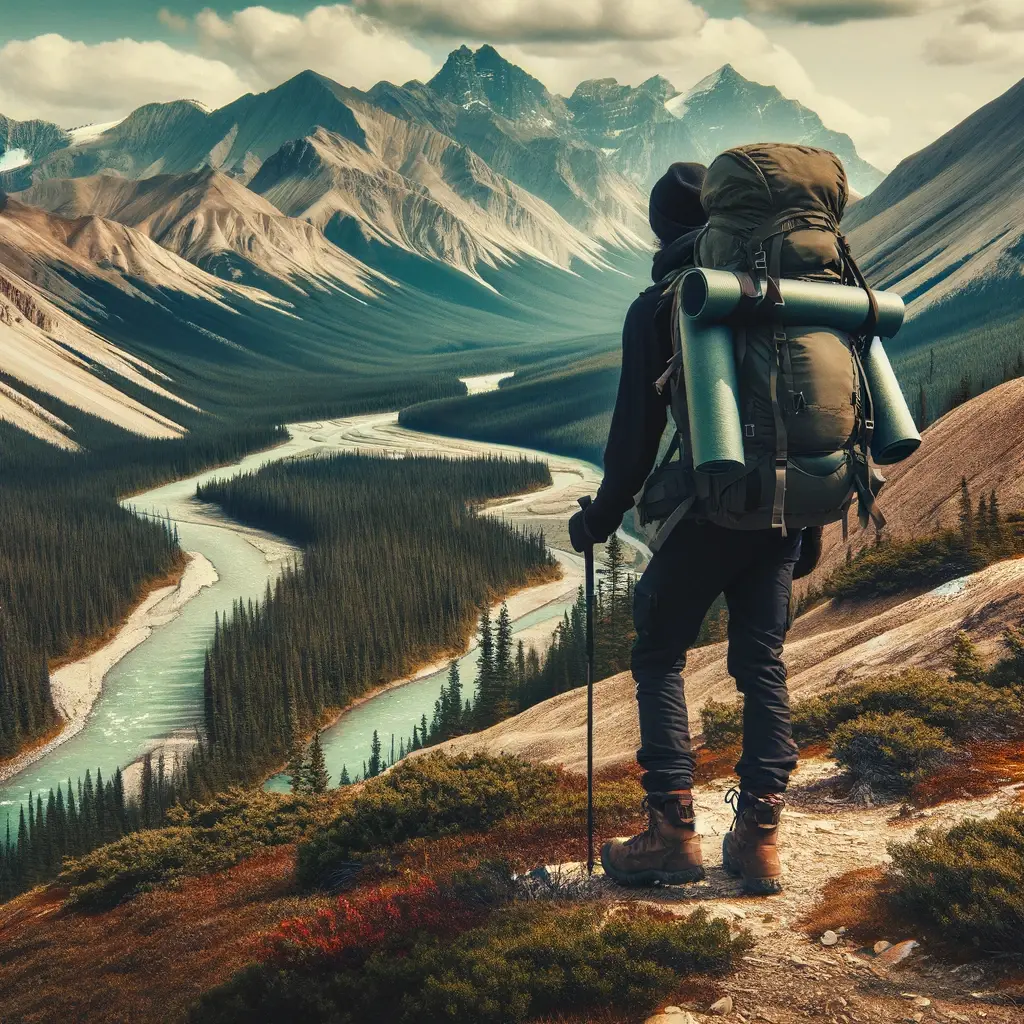
Pros
Backpacking takes you further out into nature with longer hikes, trails, and trips that can last several days, weeks, or even months.
Cons
Requires substantial gear equipment and financial resources. You may have to arrange for transport and carry heavier gear with a multiday supply.
Backpacking requires multiple skills depending on the route you take.
Backpacking Gear Essentials:
Backpack (40-60L): To carry all gear, clothing, and food needed for the duration. Choose a lightweight yet durable one.
Tent & sleeping bag: Bring a tent along with a sleeping bag which should be weather-appropriate.
Water purification system: Makes natural water sources potable to avoid illness and helps avoid carrying a lot of water supply.
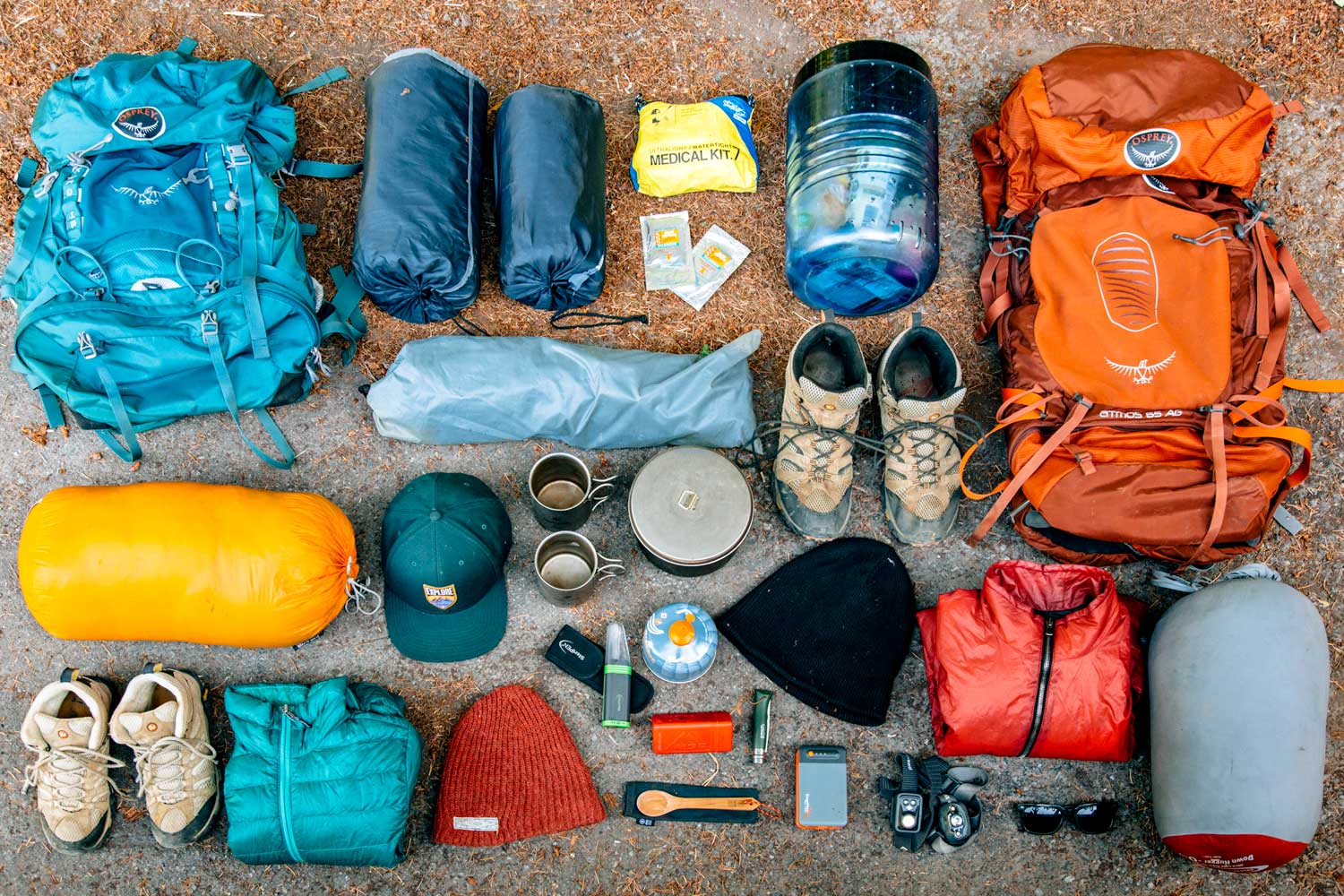
Stove, fuel, and cooking set: Carry a portable stove along with fuel for cooking meals with boilable bags or pots.
Food rations: Carry a balance of lightweight, high-energy options.
Repair kit: Keep an emergency repair kit to fix broken gear like tents and packs.
Headlamp + batteries: Allows set up camp and navigate in low light conditions.
Navigation tools: To stay oriented and find the way in the wilderness. Map, compass, GPS device.
First aid: Keep a first aid kit with bandages, ointments, medications, and tools.
Satellite communicator: Summons emergency help from anywhere. Used for serious incidents.
Trekking pole: Take strain off knees, aid stability over uneven terrain under pack weight.
Clothing layers: Carry weather-appropriate clothing.
Hiking shoes/boots: Supportive footwear will help prevent injury over long distances with the pack.
Firestarter: For warmth, signaling, and campfire (where permitted).
Toiletries: Hygiene and waste disposal essentials. Toilet paper, trowel, antimicrobial gel.
Sun protection Prevents burning and heat issues. Hat, sunglasses, lip balm with SPF.
Insect repellent: Avoid bites, and diseases from mosquitoes, and ticks.
Subclasses of Backpacking
Thru-Hikers
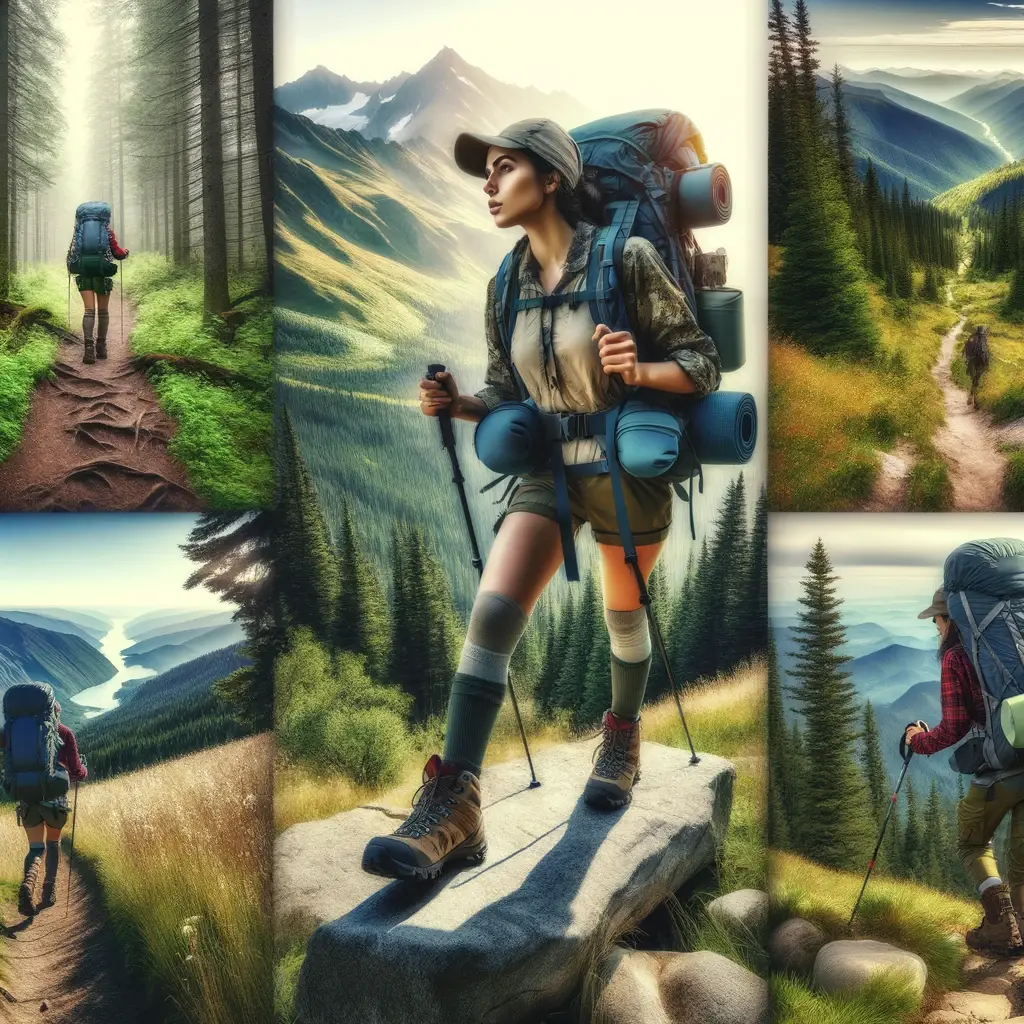
Thru-hiking refers to hiking an entire long-distance trail continuously in one trip. Well-known thru-hiking routes include:
Appalachian Trail: 2,190+ miles across 14 states from Georgia to Maine. Most thru-hikers complete it in 5-7 months.
Pacific Crest Trail: 2,650 miles through California, Oregon, and Washington along the Cascades and Sierra Nevada. Thru-hikes take 4-6 months.
Continental Divide Trail: 3,100 miles between Mexico and Canada crossing the Rocky Mountains. Only expert trekkers complete the 6-8 month journey.
Thru-hiking requires strategizing resupply points, conditioning to cover 15-25 miles per day, and determining gear like ultralight equipment.
Section Hikers
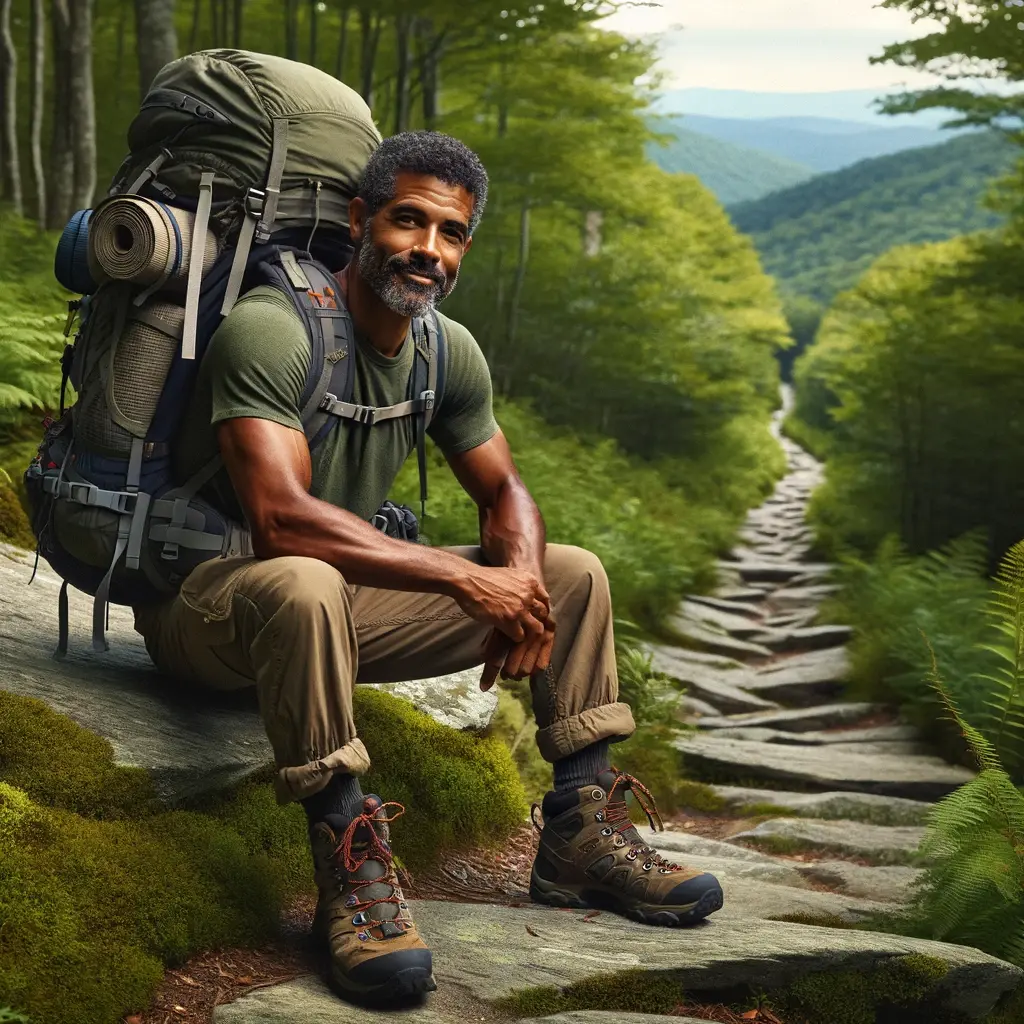
Section hiking is completing a long trail over multiple trips by hiking it in sections. This allows more flexibility for people who cannot thru-hike a trail in one push. Some approaches include:
Weeklong section hikes: Tackling 50-100 mile segments of a long trail as time allows.
Multi-year section hikes: Hiking a portion of the same trail each year to eventually complete all sections.
Route-specific section hikes: Focusing on a particular region of a long trail or completing the most scenic segments.
Section hiking provides flexibility in completing extensive trails over time based on one’s schedule and geographic access to trail sections.
Types of Trails and Terrains
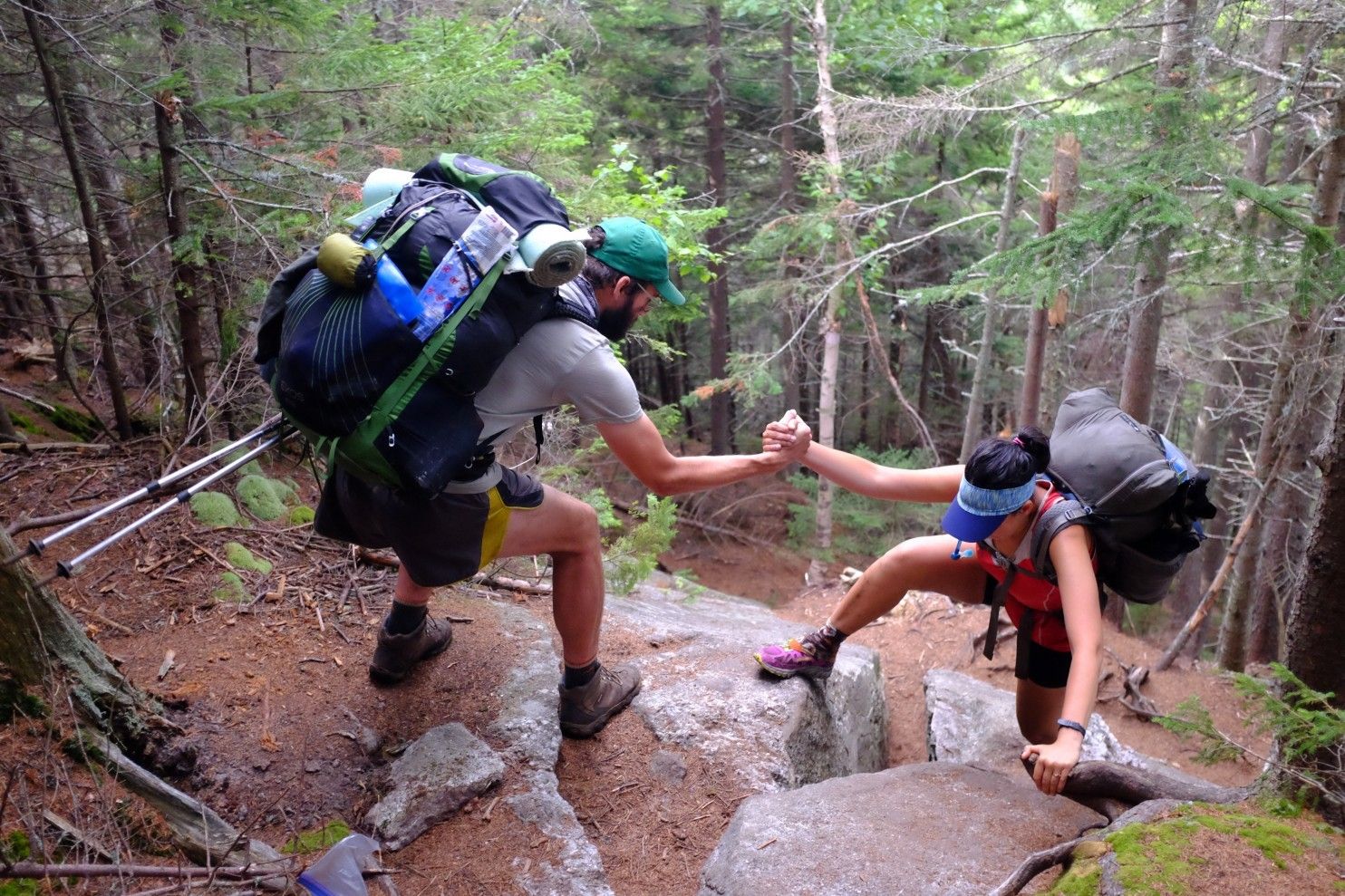
Hiking
Paved paths and gravel roads offer the smoothest, easiest hiking conditions for beginners.
Dirt trails can involve roots, rocks, and steeper uphills that require more skill but provide more scenery.
Rugged mountain hiking has very steep climbs over loose rocks and thin air at high altitudes.
Backpacking
Popular trails have built campsites, water access, and route marking which makes navigation easier.
More remote trails involve challenging navigation to find water and places to camp on your own.
Hiking without trails requires excellent map-reading skills to find your way through forests and wilderness.
Trekking
Via ferratas use fixed cables and ladders to climb near vertical walls.
Hiking on mountain peaks and ridges demands scrambling over loose, uneven rocks on exposed terrain.
Crossing rivers means finding ways to keep gear dry by rafting across or using ropes.
Walking on glaciers needs special gear like crampons and axes plus training for falling into hidden crevasses.
Geographical Quirks
Hiking
Desert Hiking: Extremely dry conditions require carrying extra water and electrolytes. Travel is often done at night to avoid intense daytime heat.
Coastal Hiking: Fog can roll in and completely obscure trails. Having a guide or navigation aids like a GPS device is critical to avoid getting lost.
Alpine Hiking: Afternoon thunderstorms are common above treeline. Starting early and being off peaks by noon greatly reduces the risk of lightning strikes.
Backpacking
Canyon Backpacking: Frequent stream crossings mean creatively finding ways to keep gear dry like lining backpacks across on ropes.
Jungle Backpacking: Dense vegetation and frequent rainfall can make navigation difficult. Waterproof gear is essential and foot care is critical to avoid infection in moist conditions.
Volcanic Backpacking: Pumice stone terrain can shred shoe soles quickly. Carrying duct tape allows on-trail shoe repairs to avoid injuring feet on the sharp, abrasive rock.
Trekking
Mount Kilimanjaro Trekking: “Pole, pole” (slowly, slowly) is a common Swahili phrase used here. Gradual acclimatization to changing altitudes is critical to avoid medical issues.
Everest Base Camp Trekking: The Khumbu Cough affecting many trekkers results from extreme dryness and altitude. Keeping well hydrated and warming air through scarves or masks helps reduce irritation.
Patagonia Trekking: Extended sections crossing exposed plains with no windbreaks require sturdy tents that can withstand high winds and staking methods less prone to ripping out.
Seasonal Considerations
Hiking, backpacking, and trekking may each require adjustments depending on the season and related weather factors.
Hiking
Day hikes need flexibility for seasonal shifts:
- Summer heat demands very early starts, extra hydration, and sun protection.
- In rainy periods, waterproof shoes and gear become essential to prevent chilling while in snowy winter conditions require traction devices and insulation from extreme cold.
Backpacking
Overnight backpacking requires gear suited to the season:
- Cold-weather camping necessitates fully enclosed tents, warm sleeping bags, and insulating pads.
- Bug seasons call for fine mesh tents, permethrin-treated clothes, and repellent sprays.
- Intense heat warrants lightweight shelters with ventilation and ample hydration supplies.
Trekking
Treks through varying climate zones require gear for multiple seasons:
- A high-elevation ascent may involve frigid nights but scorching days at lower terrain.
- Nepal’s monsoon season from June to September brings very heavy rain requiring waterproofing.
- Patagonia’s intense winds require sturdy tents that can withstand high gusts.
Safety and Risk Management
Safety and risk management are critical considerations for outdoor activities like hiking, backpacking, and trekking. Each of these activities presents unique challenges and potential hazards, so it’s important to understand how to mitigate risks and ensure a safe experience. Here’s a brief overview of safety and risk management for each of these activities:
Hiking Safety measures:
- Wear appropriate clothing and footwear for the terrain and weather.
- Carry enough water, snacks, and a first-aid kit.
- Know the trail and plan your route before starting.
- Be aware of weather conditions and the potential for sudden changes.
- Let someone know your hiking plans and expected return time.
Common risks:
- Trips and falls.
- Dehydration or heat-related illnesses.
- Exposure to extreme weather.
- Getting lost or disoriented.
Backpacking Safety measures:
- Pack essential gear, including a tent, sleeping bag, stove, food, and water purification.
- Plan your trip, considering factors like terrain, mileage, and water sources.
- Learn and practice Leave No Trace principles to minimize environmental impact.
- Be prepared for emergencies with navigation tools, communication devices, and basic wilderness first-aid knowledge.
- Follow proper food storage and wildlife precautions in bear country.
Common risks:
- Overexertion or injury due to carrying a heavy backpack.
- Adverse weather conditions.
- Inadequate food or water supply.
- Wildlife encounters.
Trekking Safety measures:
- Ensure you have proper gear, including trekking poles, cold-weather clothing, and altitude sickness prevention measures if trekking at high elevations.
- Acquire necessary permits if trekking in protected areas.
- Hire local guides if trekking in unfamiliar regions, especially in foreign countries.
- Be aware of the specific challenges of the trek, such as altitude, extreme weather, and trail conditions.
- Follow the principles of responsible trekking, which includes waste disposal and respecting local cultures.
Common risks:
- Altitude sickness.
- Severe weather conditions, including avalanches in mountainous regions.
- Navigation difficulties in remote areas.
- Inadequate acclimatization to high altitudes.
Conclusion
While hiking, backpacking, and trekking all involve escaping into nature under your power, the duration, demands, and extent vary greatly. Hiking serves as an accessible adventure for novices, while multi-day trekking presents extreme challenges requiring advanced skills.
Understanding these key differences allows you to select the pursuit that best matches your current fitness, time constraints, budget, gear access, and wilderness experience. You can also progress from easier hiking to extended backpacking and trekking as your capabilities grow.
The trail options extend from urban pathways to remote mountain peaks, enabling you to challenge yourself while enjoying the mental benefits of being unplugged in nature. Whether you have an hour or a month to venture out, choosing the right type of walking excursion into the wild allows you to reap the revitalizing rewards.
Frequently Asked Questions
What is the difference between a thru-hiker and a backpacker?
A thru-hiker is a backpacker attempting to complete an entire long-distance trail in one continuous hike. Backpacking involves multi-day hiking with overnight gear, while thru-hiking aims to hike the entire trail like the Appalachian Trail or Pacific Crest Trail without leaving and returning.
How many miles should a beginner backpacker hike?
For newer backpackers, 5-8 miles per day is a reasonable starting distance to build skills without overexerting. Take terrain difficulty into account, not just mileage.
Does hiking burn belly fat?
Yes, hiking engages core muscles and torches calories, which can help reduce overall body fat including around the midsection when combined with a healthy diet.
What is the difference between backcountry and backpacking?
Backpacking involves multi-day hiking and camping in the backcountry wilderness while carrying your gear. Backcountry refers to primitive, undeveloped natural areas farther from human access.
What is the number one rule of hiking?
The number one rule for hiking is to tell someone your planned route and expected return time. This ensures help arrives if you get delayed or lost.

